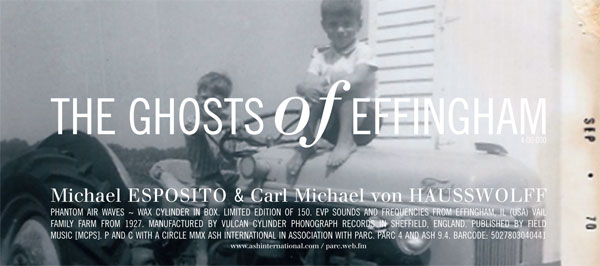Buy on Bandcamp
Released in association with PARC (PARC 4)
4-minute Luminescent Wax Cylinder, plus two MP3 digital downloads
The Medium: In 1877, Thomas Edison was trying to develop a telegraph inscription machine that would transcribe telegraph messages into indentations on a paper strip so the message could be replayed at will. From this he surmised that a telephone message could be recorded in a similar way. Using a diaphragm with an embossing point against rapidly moving paraffin paper, he achieved a certain amount of success. Edison changed the paper to a tin foil wrapped cylinder and added a second diaphragm needle unit for playback. Edison finished the plans for the machine on August 9, 1877. He gave the sketch of the machine to his engineer John Kreusi, who built it in only 30 hours. The first test of the machine was performed on August 12, 1877 with Edison reciting the now-famous “Mary Had a Little Lamb” nursery rhyme.
Exactly 133 years later, between 9th August 2010 and 12th August 2010 the first Luminescent Phonograph Cylinder Record was editioned. To accentuate a point, the cylinder contains recorded voices of unknown origins, possibly spirits of the dead. This is pertinent because late in Edison’s life, he believed that he might be able to one day develop a recording device sensitive enough to record spirits of the dead. This was inspired with the loss of his wife Mary Stilwell Edison due to a brain tumour on 9th August 1884. Exactly 126 years later, the world’s first cylinders containing voices of the dead were released.
The Media: “The Ghosts of Effingham” was created using EVPs (Electronic Voice Phenomena) captured at the family farm of Michael Esposito, “The Vail”, in Effingham, Illinois (established 1927). Carl Michael von Hausswolff lent composition and frequencies based on Friedrich Jürgenson’s work. Two MP3s are supplied with each Cylinder purchase. The first of which is the original track. The second is of the cylinder as played on an Edison Fireside (1909) Model A with a Diamond B reproducer and a Cygnet horn. The result is a sonic testament to the work dreams and desires of man to record the sound of his own voice in life and even in death.


